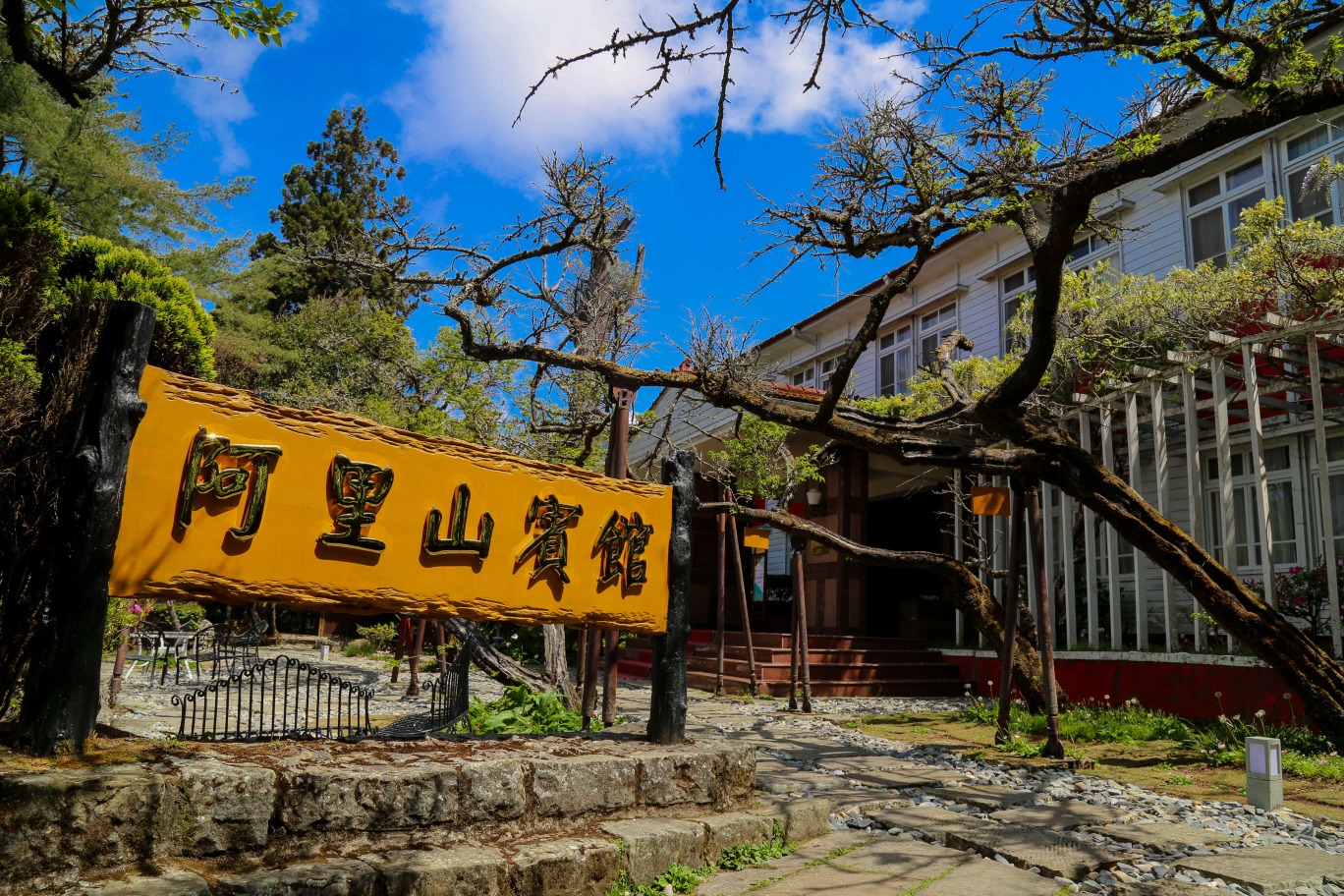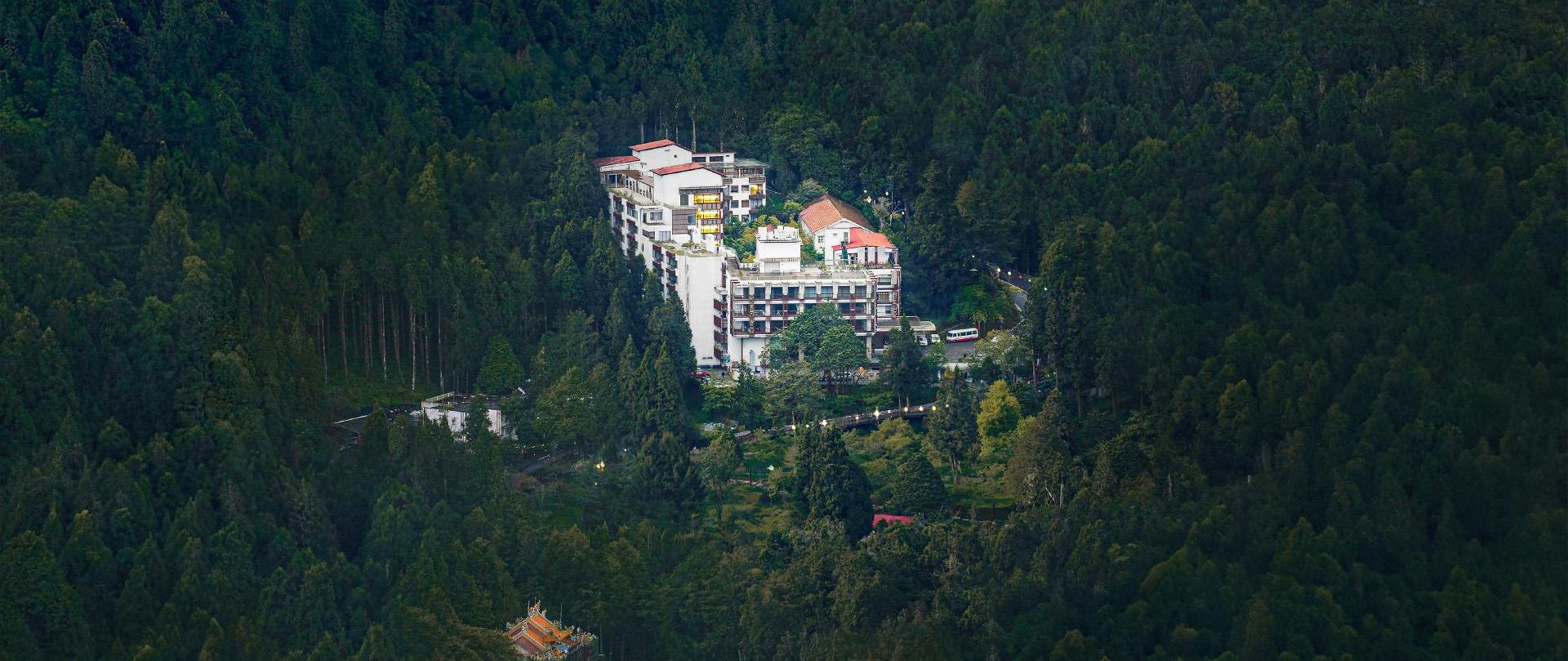Hotel Origins
《 Century-Old Historical Governor’s Guesthouse 》

When you arrive in Alishan, your first impressions are likely to be of the sunrise, sea of clouds, forests, railway, and cherry blossoms. However, little do many know that the Alishan area also hides some lesser-known ancient buildings and landmarks, among which is the most famous accommodation spot in the Alishan region—the Alishan Hotel.
Established over a century ago, the Alishan Hotel has witnessed the ups and downs of the Alishan Farm. For those familiar with its history and local culture, it's known that the Hotel wasn't always called by its current name. Originally, it was known as the "Alishan Club."
Back in 1895, the discovery of vast stands of cypress forests led to the development of Alishan as a forest farm. The world-renowned Alishan Forest Railway, constructed during this period, was a vital transportation link for timber extraction. By 1912, the railway extended to Erwanping, facilitating timber harvesting. In 1914, it reached Zhaoping, completing the mainline of the Alishan Forest Railway.
According to historical records, during the Japanese colonial period, clubs and guesthouses were scattered throughout the Alishan area, from Zhaoping to Erwanping, reaching as high as the Yushan Pass and as low as along the railway line. The primary purpose of the construction was to provide convenient accommodations and rest areas for the forest farm personnel on business trips.
Over time, many of these clubs disappeared due to changing times. However, the largest and most enduring one from that era is the predecessor of today's Alishan Hotel—the "Alishan Forest Farm Club." When the club was built in 1912, transportation was inconvenient, and obtaining building materials was challenging. Additionally, the Alishan Forest Farm was abundant in high-quality materials such as cypress, making it ideal for construction. Therefore, the club was constructed using locally sourced materials, giving rise to the famous century-old cypress building—the Alishan Hotel Historical Building.
The Alishan Hotel was built in 1913, using cypress harvested from the Alishan area by the Japanese in Taiwan at the time. The entire building was constructed using traditional mortise-tenon structure without a single iron nail, making it a rare historical structure. According to the elderly in Alishan, originally, there were three buildings: the main building for Japanese residents, where Taiwanese people were not allowed to enter; the adjacent old building (now renovated into the concrete building of the Historical Building), which served as the dormitory for Taiwanese white-collar workers employed by the Japanese; and the rear building, which housed the lumberjacks. However, later destroyed by fire, only the main building was left standing.
At the inception of its construction, the main building was named the "Alishan Forest Farm Club," serving as the administrative, economic, political, and cultural center for the Japanese residing in Alishan at that time. The initial purpose of constructing the main building was for the management of the old-growth forests of Alishan. The cherry blossoms planted in front of the building were introduced by the Japanese, and they belong to the high-grade variety of cherry blossoms known as "Prunus × yedoensis," the same variety as those planted in the Japanese palace. These cherry trees have stood for over a hundred years. Additionally, the towering cypress on the left side of the building is nearly nine hundred years old. Originally, there was a copper bell at the top of the tree, but its whereabouts are now unknown. It was used by the Japanese to gather the residents of Alishan at that time.
The Alishan Hotel has hosted numerous distinguished guests over the years, including nine governors-general during the Japanese colonial period and five presidents of the Republic of China, as well as former Prime Minister Lee Kuan Yew of Singapore and diplomatic envoys. After Taiwan's retrocession, the government renamed it the "Alishan Hotel" for hosting distinguished guests and official functions.
In 1965, the Forestry Bureau invested 1.8 million to refurbish the guest house. In addition to preserving the original cypress architecture, the former forest farm single dormitory was converted, and a new reinforced concrete building was constructed. This new building comprised 16 suites and 7 Japanese-style tatami rooms, and it was renamed the "Alishan Hotel." Since then, the Alishan Hotel has been formally named and has continued to operate under this name to this day.






